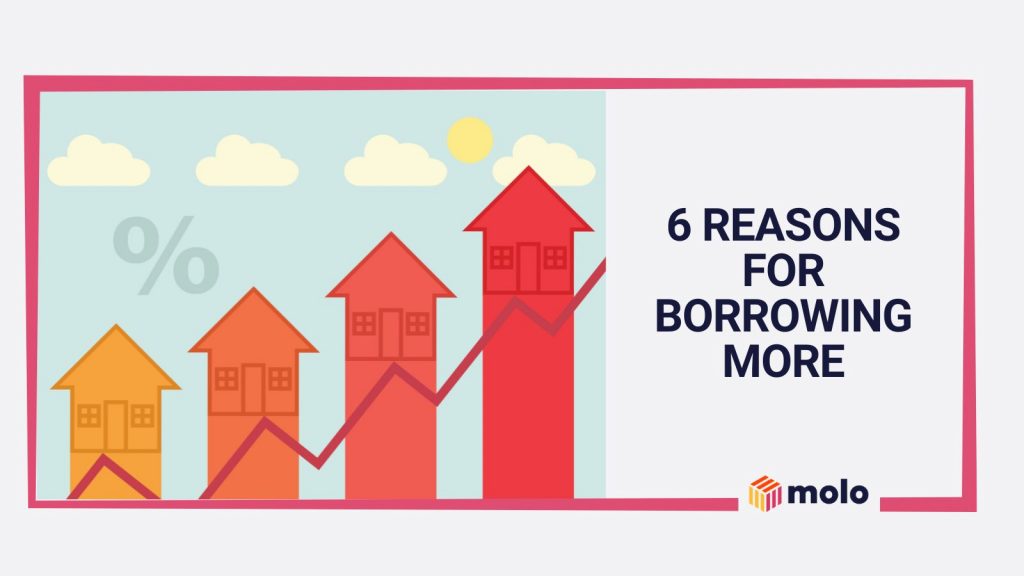Remortgaging is the process of switching your existing mortgage to a new deal, either with your current lender or a different one. For many, staying with the same lender is appealing. After all, they don’t need to provide as much information because the current lender already has all of your details.
That’s not to say switching to a new lender should be dismissed. Investors remortgaging their buy-to-let can potentially find better deals by switching to a new lender with competitive rates. Essentially, it’s about finding the right remortgage for you. Should you decide to switch to a new lender, you might be wondering about the process. With that in mind, we’ve put this guide together looking at what remortgaging to a new lender entails.
Understanding remortgages
The timing of your remortgage can have a significant impact on the financial benefits you can gain, as well as several other factors like available rates, mortgage term and type. Ideally, you should start exploring new mortgage deals around three to six months before your current mortgage’s initial period comes to an end. Doing so helps secure rates in advance while avoiding going onto the lender’s standard variable rate (SVR).
Once your existing deal ends, you’re typically moved onto the lender’s SVR. This rate is often higher than initial-rate deals, which means your monthly payments can potentially increase.
Not to mention that you may be able to find a better rate than the one you’re currently on, although with interest rates rising 13 times between the end of 2021 and mid-2023, most people remortgaging in this period are more likely to end up on a higher rate.
Why choose a new lender?
Choosing to remortgage with a new lender can be a strategic financial decision for some borrowers. While your existing buy-to-let lender may offer the comfort of a known entity and require less work on your part, a new lender could potentially provide a more competitive deal that better suits your financial needs.
This could include lower interest rates than the new deal offered by your current lender, flexible terms regarding aspects like early repayment charges and overpaying, fewer initial mortgage fees, or additional features specific to the lender. These can all contribute to significant savings over the life of your mortgage.
So before committing to your current lender, take some time to compare the offers available and see if there’s an opportunity to get onto a better deal. Look at the interest rates, repayment terms, associated fees and any other additional benefits that going with a new lender might bring.
Remember, a mortgage is a long-term commitment even if the initial rate only lasts a couple of years, and the right lender can make a significant difference to your overall buy-to-let experience.

Subject to receiving all the relevant information and qualifying for an automated property assessment
Remortgage in 24 hours
Molo offers a range of buy-to-let remortgage deals starting from 80% LTV
Factors to consider when remortgaging to a new lender
Should you opt to remortgage with a new lender, there are several factors worth considering. For starters, what interest rate do they offer? With the Bank of England base rate currently sitting at 5% (as of July 2023), anyone remortgaging for the first time since 2021 is likely to experience higher costs due to continuous rate increases, regardless of whether they choose a new lender or stick with their current one.
A higher LTV allows you to borrow more, but it may also come with higher interest rates as you’re paying a lower deposit and relying more on the lender to provide funding. Ultimately, the LTV a lender is willing to offer can significantly impact your borrowing capacity and the cost of the mortgage.
There is the small matter of choosing the rate type when remortgaging. Options include fixed-rate mortgages, where the interest rate is set for a certain period, and variable rate and tracker mortgages, where the interest rate can fluctuate based on market conditions. Trackers typically follow the Bank of England’s base rate, while a variable rate is set by the lender.
Different lenders offer a variety of mortgage products with unique features and benefits. Molo’s Savings Booster for example, offers an innovative approach that effectively lowers your monthly interest payments. It’s a unique feature that distinguishes Molo from other lenders, offering customers a practical way to leverage their savings for mortgage interest reduction by allowing you to deposit funds into your buy-to-let linked overpayment account to reduce your monthly payments.
It’s not just the interest rate that contributes to the overall cost of the loan – fees also have their role to play. These can include arrangement fees charged by the lender for setting up the mortgage, valuation fees for assessing the property’s worth, and early repayment charges from your current lender if you switch before the end of your term. The costs can add up, so it’s important to factor them into your calculations.
When considering a new lender, review the terms of the mortgage to understand whether it offers flexibility, such as the ability to make overpayments that can reduce your overall interest and shorten the mortgage term. You should also check if there are early repayment charges in case you wish to leave the mortgage early and switch to another lender.
A lender with a strong reputation and excellent customer service can make the remortgaging process smoother and less stressful while giving you more confidence. Good customer service is also vital during the remortgaging process, and a lender offering a responsive, clear and helpful service can make a huge difference to your experience.
Remortgaging to a new lender doesn’t always need to be a slower process than if you stuck with your current mortgage provider. Ultimately, everything depends on the new lender’s process. Take Molo, for example. Our online remortgage applications means you can get a remortgage within 24 hours. Everything takes place online, so there’s no paperwork or appointments.
Learn more about buy-to-let mortgages:
How to compare different lenders
Comparing different lenders is a part and parcel of the remortgaging process, especially when you’re moving over to a new mortgage provider. Let’s take a look at the best way to compare different lenders.
You can use comparison websites, which provide a broad overview of the market and help identify potential lenders. Comparison websites may be limited in some capacity, as they don’t always show every lender. But they’ll give you a solid idea of current interest rates and the type of deals lenders offer.
If you don’t wish to renew with your current lender, then consider using the services of mortgage brokers who offer personalised advice based on your situation. Brokers can often save you a lot of time, helping you navigate the complexities of the mortgage products on offer and whether you meet the criteria. They may also have access to products not available on comparison websites. Molo works with plenty of brokers, and you can get a remortgage with us through intermediaries or directly by applying for a remortgage.
Moving to a new lender means agreeing to a different set of terms and conditions. While reading the fine print might seem somewhat tedious, it’s necessary for making sure you understand everything related to the remortgage.
These terms and conditions serve as the contractual agreement between you and the lender. They detail your obligations as a borrower, including the repayment schedule, interest rate details and the consequences of missed payments. They also outline any charges or fees you might incur, such as early repayment charges if you decide to overpay or end your mortgage early.
Understanding these terms can help you avoid unexpected costs and ensure that the mortgage deal aligns with your financial plans. Moreover, they can provide clarity on your rights and the lender’s obligations, helping to prevent potential disputes in the future. So always take the time to read and understand the terms and conditions before committing to a new mortgage deal.
The remortgaging process
Expected timeline for the remortgaging process
The timeline for remortgaging to a new lender can vary significantly depending on the mortgage provider and any potential complications that may arise. Typically, it takes between four to eight weeks from the start of the application to the completion of the remortgage. This time frame allows for all the necessary steps, including the application, property valuation, approval, legal work, and finally, the transfer of the mortgage.
With digital-first lenders like Molo, the process can be significantly faster. We use technology to streamline the application and approval process, potentially helping you to get a remortgage offer in as little as 24 hours.
The rapid turnaround can be particularly beneficial if you’re looking to remortgage quickly. Take a look at our Molo remortgage calculator to see how much you can borrow.

Subject to receiving all the relevant information and qualifying for an automated property assessment
Remortgage in 24 hours
Molo offers a range of buy-to-let remortgage deals starting from 80% LTV
Costs Involved in remortgaging to a new lender
Remortgaging can bring about various costs that you need to factor into your decision-making process. It’s worth remembering that you won’t necessarily pay all of these costs, and it largely depends on the lender. Some key expenses may include:
Arrangement fee. This is charged by the new lender for setting up the mortgage. It can vary widely and can sometimes be added to the mortgage amount.
Valuation fee. The new lender will want to carry out a valuation of your property to determine its current market value and how much they’re willing to lend. This fee can depend on the value and type of property.
Legal fees. Remortgaging involves legal work, including dealing with the Land Registry and transferring the mortgage deed. You’ll usually need to hire a solicitor or conveyancer to handle this, which incurs a cost.
Early repayment charge. If you’re leaving your current lender before the end of your mortgage term, you may have to pay an early repayment charge. This can be a significant amount, often a percentage of the outstanding mortgage.
Exit fee. Also known as a deeds release fee or a sealing fee, this is charged by your current lender for releasing its claim on your property.
Broker fee. If you’re using a mortgage broker to help you find a new deal, they may charge a fee for their service.
It’s important to consider all these costs when deciding to remortgage. While a new deal might seem cheaper compared to others based on monthly repayments alone, the costs associated with remortgaging could outweigh the potential savings.
Calculating your savings
Working out if remortgaging to a new lender will save you money in the long run involves a careful comparison of costs.
Start by determining the total cost of your current mortgage over its remaining term, including both the capital and interest payments, as well as any associated fees.
Then, do the same for the new mortgage you’re considering. This should include the new interest payments, any arrangement or application fees, valuation fees and potential early repayment charges from your current lender.
By comparing these two figures, you can see whether the potential savings from a better interest rate or terms with the new lender outweigh the costs of remortgaging. It’s a fundamental step to ensure that your decision to remortgage is financially beneficial in the long term.
Here’s an example of what calculating your remortgage could potentially look like in real life:
Current mortgage. You have a £200,000 mortgage at a 7% interest rate.
The yearly interest on this mortgage is £200,000 * 7% = £14,000, and the monthly interest is £14,000 / 12 = £1,167.
Over a 5-year term, you would pay a total of £1,167 * 12 * 5 = £70,020 in interest.
New mortgage. You’re considering remortgaging with a 5-year fixed rate at 5.5% interest.
The yearly interest on this mortgage is £200,000 * 5.5% = £11,000, and the monthly interest is £11,000 / 12 = about £917.
Over a 5-year term, you would pay a total of £917 * 12 * 5 = £55,020 in interest.
Don’t forget the £1,500 in fees for the new mortgage and the 2% early repayment fee for your current mortgage. This would add £200,000 * 2% = £4,000.
The total cost of the new mortgage over five years, including fees and the early repayment charge, would be £55,020 + £1,500 + £4,000 = £60,520.
Comparing the cost of staying with your current mortgage for another 5 years (£70,020) with the cost of the new 5-year fixed-rate mortgage including fees (£60,520), you can see that remortgaging would be cheaper in this scenario.
As always, remember that this is a simplified example and doesn’t take into account what might happen after the five-year fixed-rate term ends. Interest rates could increase or decrease significantly, and this could affect your payments. For personalised advice, it’s best to consult with a financial advisor or mortgage specialist.
Current mortgage | You have a £200,000 mortgage at a 7% interest rate. |
Monthly expenditure | £850 |
Asset value | £650,000 |
Cash investment | £250,000 |
Final thoughts: remortgaging to a new lender
Remortgaging to a new lender can be a beneficial move, potentially saving you money and offering more favourable terms. However, it’s important to carefully consider all aspects of the process, from choosing a new lender to understanding the costs involved. Do this, and you’re well on your way to finding the right remortgage deal with a new lender.
Remortgaging to Molo
Molo offers a streamlined remortgaging process for standard buy-to-let properties, so landlords can remortgage within 24 hours, subject to the provision of all relevant information and qualification for an automated property assessment.
We have competitive deals for individuals and limited companies, with a quick, efficient process and up to 80% loan-to-value (LTV) on remortgages. We also cater to a wide range of specialist mortgage options, including holiday let, HMO, multi-unit properties and portfolios.
Learn more about remortgaging with Molo
Get the lowdown on Molo:

Subject to receiving all the relevant information and qualifying for an automated property assessment
Remortgage in 24 hours
Molo offers a range of buy-to-let remortgage deals starting from 80% LTV



